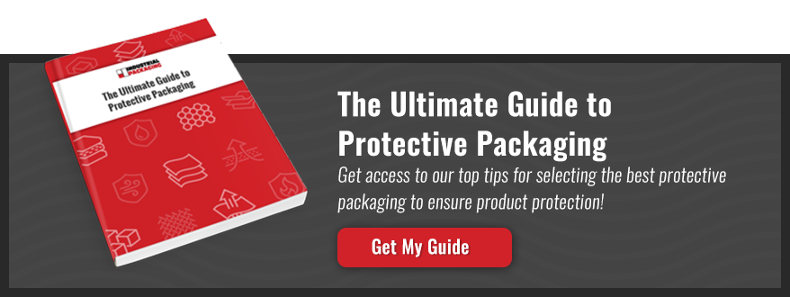How to Decide What Type of Packaging is Best for your Product
Packaging Materials | Environment | The Business of Packaging | Supply Chain Services/ Contract Packaging | Investment

The products you manufacture for consumer purchase must be designed with proper planning and research to provide the most value with the lowest cost of production.
This means that the packaging you go to market will require attention to detail in order to gain visibility in the marketplace as well as to convey the value that the product holds. The packaging materials themselves and the visual appeal are vital in grasping consumer’s attention, making the sale, and gaining repeat business. Think more of product packaging as an investment - rather than an added cost.
It's a known fact that cost of packaging is a major deciding factor in determining the materials and overall design of the package, but what isn't as well known is the fact that skimping on packaging can actually cost you more money in the long run.
Don't worry - we've got you covered and are going to walk you through how to decide which type of packaging is best for you and your product.
What Packaging is right for me?
Smart packaging design will save your brand in product damage, re-runs and re-wraps, transport, storage, and disposal costs, but there are many things to consider; from weight, to target market, to sustainability and shipment.
When you’re new to the packaging world, it can seem intimidating to learn to navigate the different terms and options that you’re encounter. It’s tough to learn how to find the right product packaging, and what’s the best product packaging for your needs.
That is why a Packaging Professional who is seasoned in the business of packaging can help your brand achieve the overall design and messaging for your product while staying within the limits of your budget and the regulations of the market.
How can you use packaging to reach your target market?
To answer this question you need to ask yourself a few questions such as:
- Who benefits the most from your product?
- What age group do they fit in?
- What are their day-to-day lives like?
- What colors represent your product and the market you are trying to appeal to?
By asking these questions you will be able to research your target market and define your package design and messaging around their preferences and needs to help ensure they find your product, and relate to it. If you make your target market too broad and appeal to everybody, you run the risk of not appealing to anybody. Use packaging as your first line of attraction to draw in the consumer and to close the deal.
For example, if you’re marketing a product designed to help hunters, packaging with bright pinks and purples and script fonts on the labeling, your product is most-likely going to fail at the market.
To make the right calls on packaging, the first step is to put yourself in their shoes. What are your needs as a hunter? What do hunters require to be successful? What would deter you as a hunter? Is the packaging you are selecting scented or noisy, both which may deter an animal from sticking around? Furthermore, do you fully understand the needs of a hunter?
Do your brand a favor and perform market research; either internally or with a market research firm in order to understand the market and develop a package that speaks to them. This is a packaging best practice and a way to achieve ideal product packaging.
Creative Cost-reduction & Retail Visibility
Printed shrink film is a great alternative to traditional labeling. It’s a versatile material that allows printing of high-quality graphics and important information on all sides of a package while reducing the need for additional labeling materials, machinery, and labor. Shrink film is receptive to bright colors and sharp designs, providing endless options for product packaging that catches your customer’s eye.
Point-of-Purchase (POP) displays can help liven up your product’s appearance and make it stand out from competition on the shelf. If you are running a holiday promo, launching a new product, or combining 2 or more items for a seasonal promotion, POP displays are an awesome way to gain consumer attention and show your products off in a retail setting. There are multiple sizes and designs to choose from, and a professional can help you choose one that will be accepted at each of your retail outlets.
Is Your Packaging Efficient For Distribution?
Your product is also dependent on packaging that can protect it during transport. If you aren't investing time and care in selecting the proper shipping protection, you are risking not only damaged goods, but also repeat business, lost customers, angry retailers and of course, lost profits. It’s much cheaper to invest in proper protective packaging from the beginning, rather than to find yourself paying to replace a damaged product (and customer relationship) later on.
Determine how sensitive the product is to rough-handling and build a protective package around these needs. It is smarter to assume your product may be punted across a football field during transport and to protect it based on this than to package it assuming it will leave your packaging line and arrive on the shelf at the store with genuine care throughout the delivery.
One popular solution to the rigors of transportation are air pillows. Air pillows are a void filler that helps protect the product by providing a buffer between the product and possible harmful collisions. Air Pillows are non-abrasive as well, so you don’t have to worry about packaging getting scratched.
Shelf life is also an important consideration when selecting product packaging. The packaging materials you select and the formulations you choose for films that add barrier-protection for oxygen, moisture, chemicals or light are extremely important in determining shelf-life. Working with a professional who is well-versed in additives for packaging protection will prove to be a huge benefit for your packaging project.
Standardized Packaging?
Standardizing package sizes is a great way to save on production costs because when it comes to storing and shipping, certain shapes can be stacked and stored better than others. Stackable packaging shapes take up less empty space, meaning you can send more in less trips per pallet. For example, round packaging creates empty space meaning you can stack much less per pallet than if you used rectangular packaging.
Improve productivity and efficiency by limiting your packaging designs in-house. Using one design for multiple products is a great way to reduce production costs and the time required to set your packaging line up for a different package.
If you’re not sure if and where you can reduce material and packaging costs, consider asking a professional what you can do. A professional can come to your facility and perform a Line Audit that will clearly define specific areas for improvement and ways that you can increase your productivity while reducing labor costs. They can also help determine if there are more ideal materials for your packaging that may improve your re-wrap rates and reduce product damages without completely overhauling your current package design.
What About Material Options?
The packaging world is vast, and there are different types of basic packaging products that cater to very specific and very broad packaging needs. There is shrink film for instance, which is often confused with stretch film.
In fact, did you know there are three types of shrink film that all perform very differently?
Not all films are safe for use with food, others don’t perform well under heat, and some become brittle after heat is applied during shrinking. Some plastics are more recyclable than others, which is becoming a big trend as companies focus more on sustainable packaging. There are also new materials and options that focus on reducing environmental impact. These are just a few of the major considerations to review when you are selecting a packaging material or new package design.
Are you still asking yourself, “What packaging is right for me?”
We don’t blame you!
Navigating the world of packaging options is ambitious whether you’re new to the game or a seasoned veteran. A lot of companies, even larger operations, like Cabela’s, don’t get it right the first time. It’s an essential component of product manufacturing, and it’s imperative that you invest time and focus on it.
If you don’t have the resources or experience to handle it in house, then it may be worth considering outsourcing with a contract packager who does. If you are interested in working with a professional who can help design the perfect product packaging for your brand, we are here to help.
About David Roberge
I am grateful to be part of the outstanding Industrial Packaging team. I am able to hang out with some of the most knowledgeable folks in the packaging industry. I feel even luckier that I am able to share that knowledge with you. I love learning, hiking, and growing people and teams both personally and professionally, and helping companies grow better.



